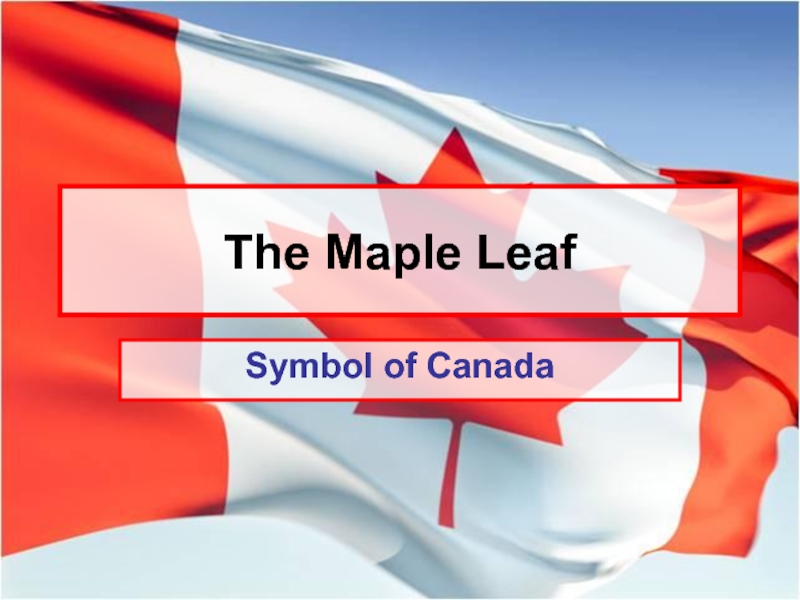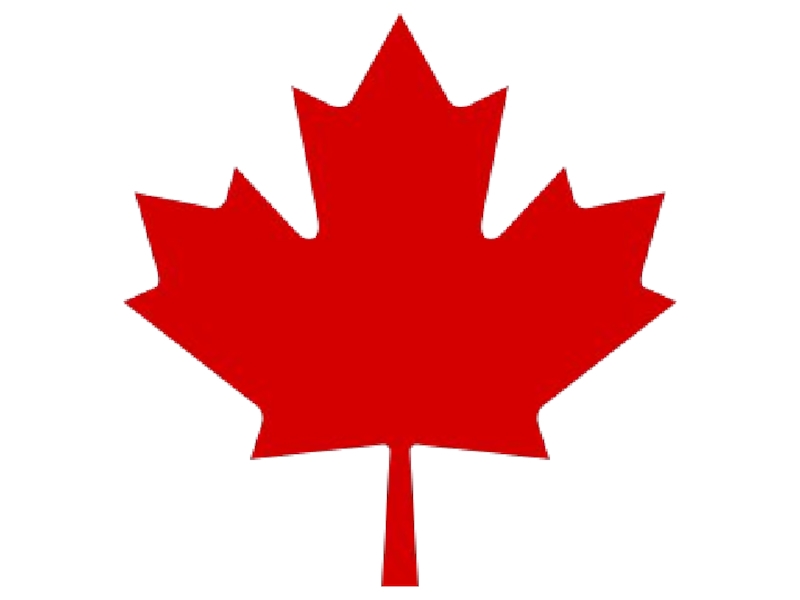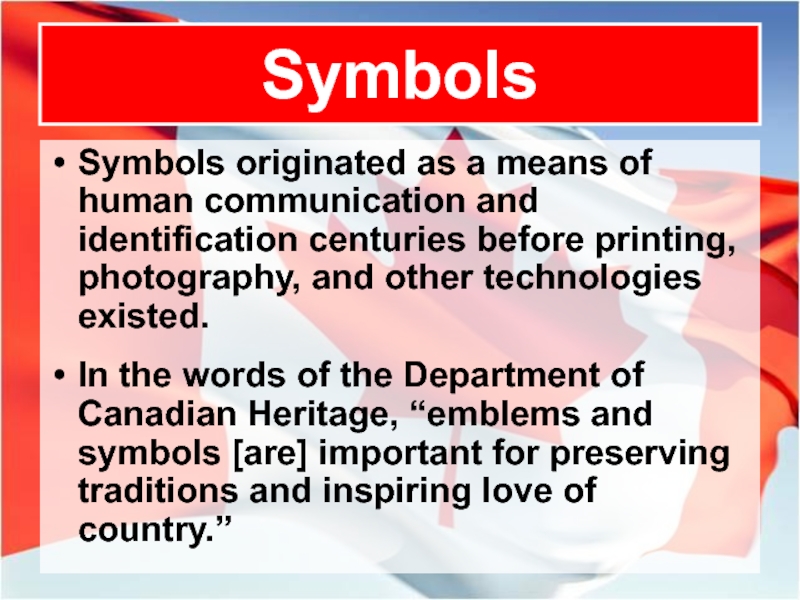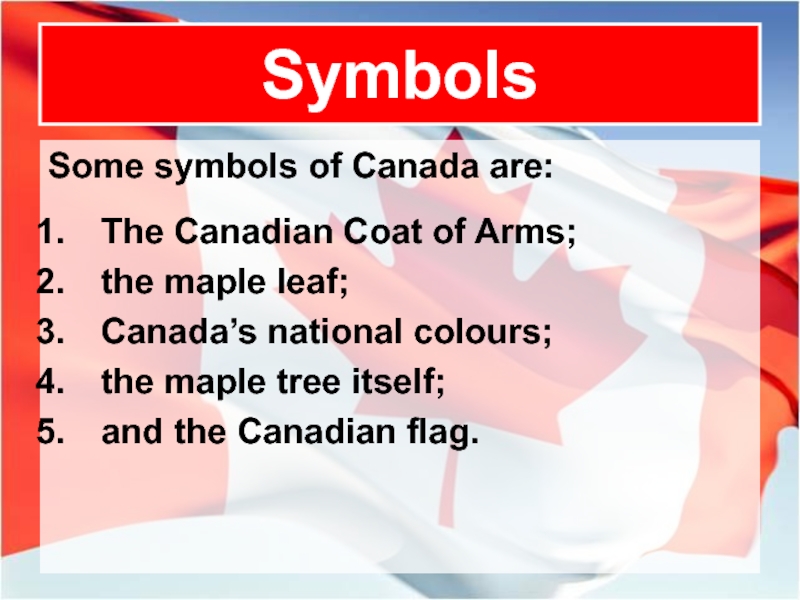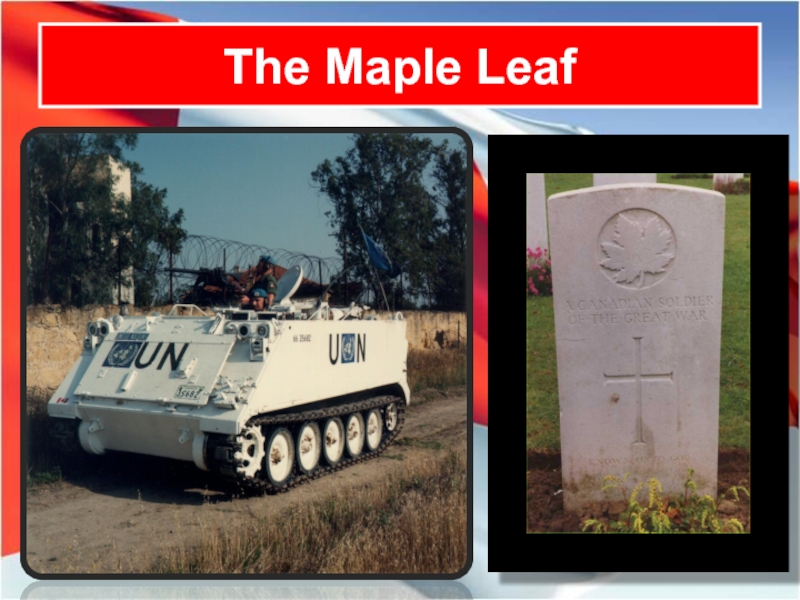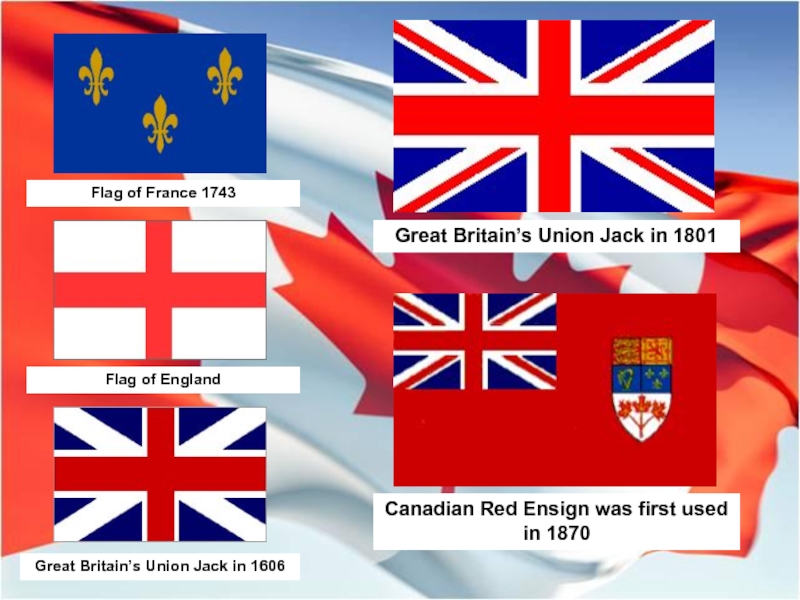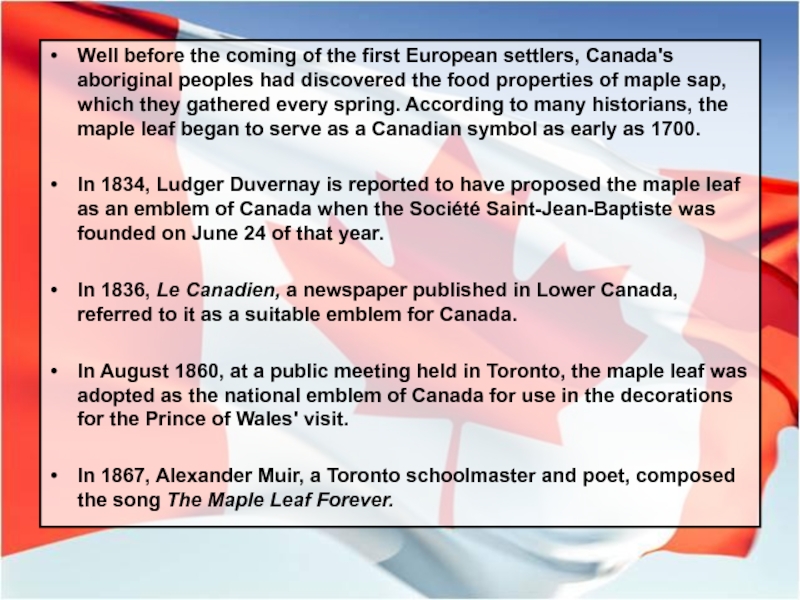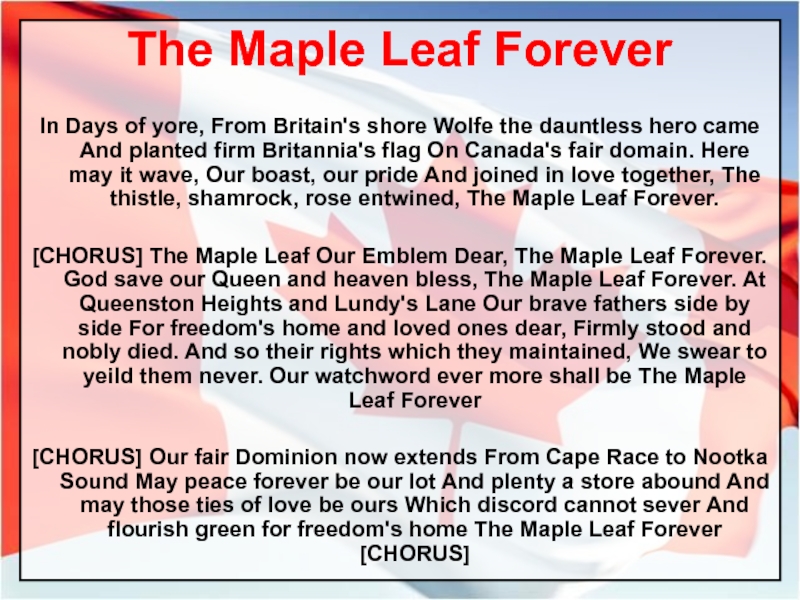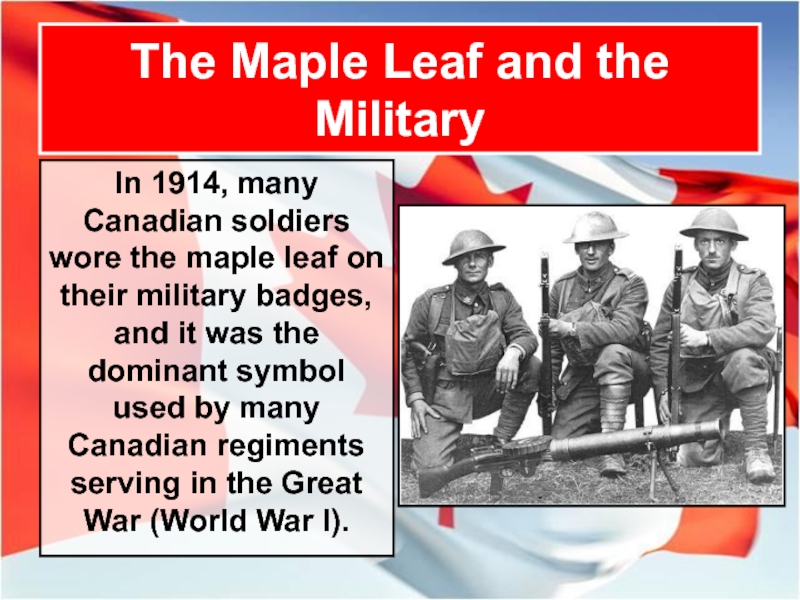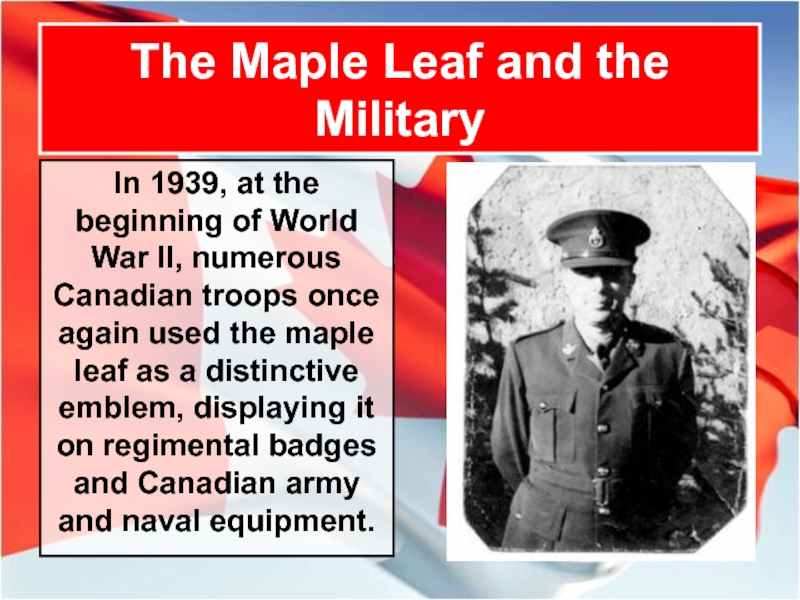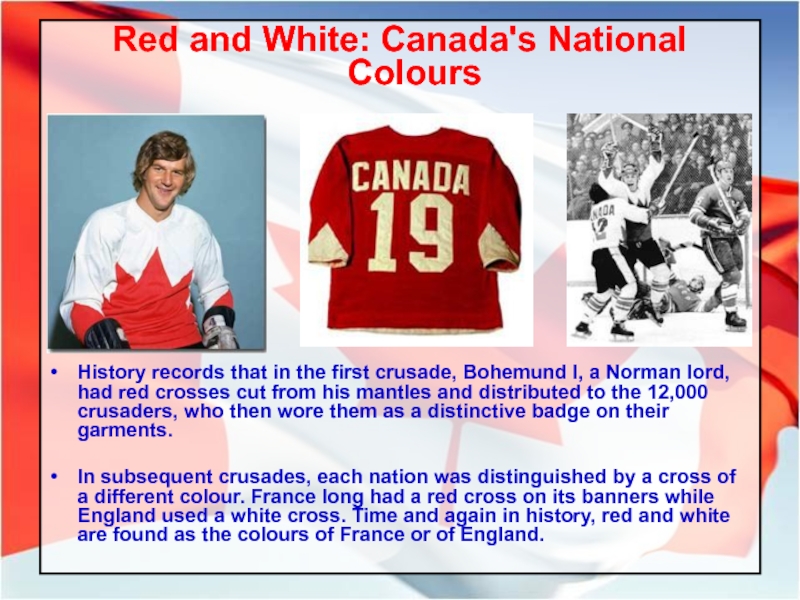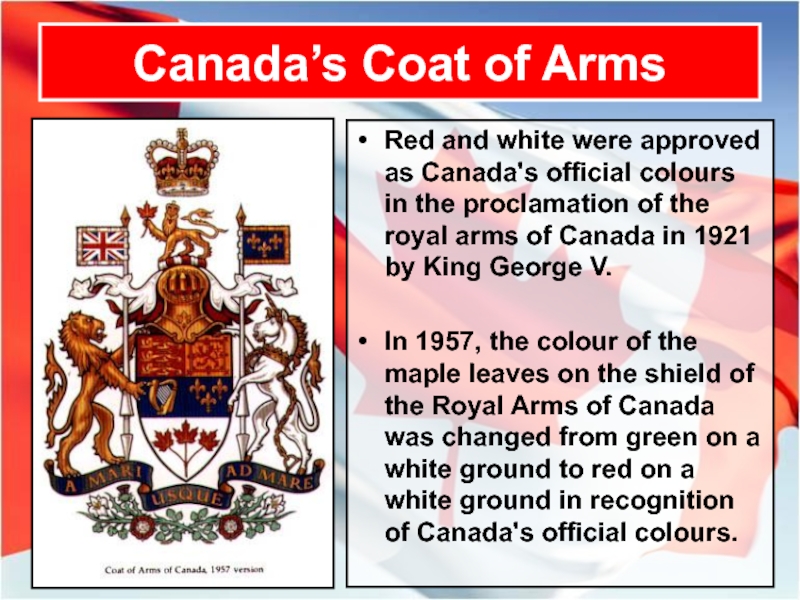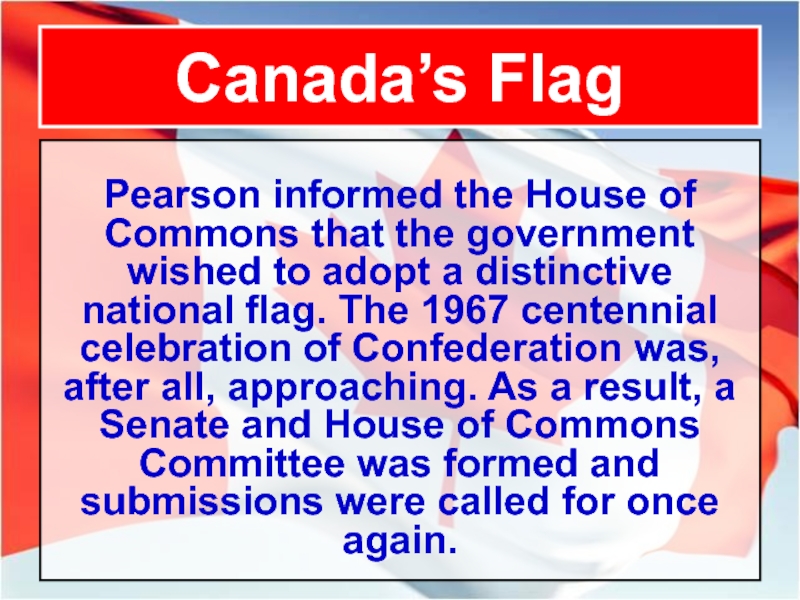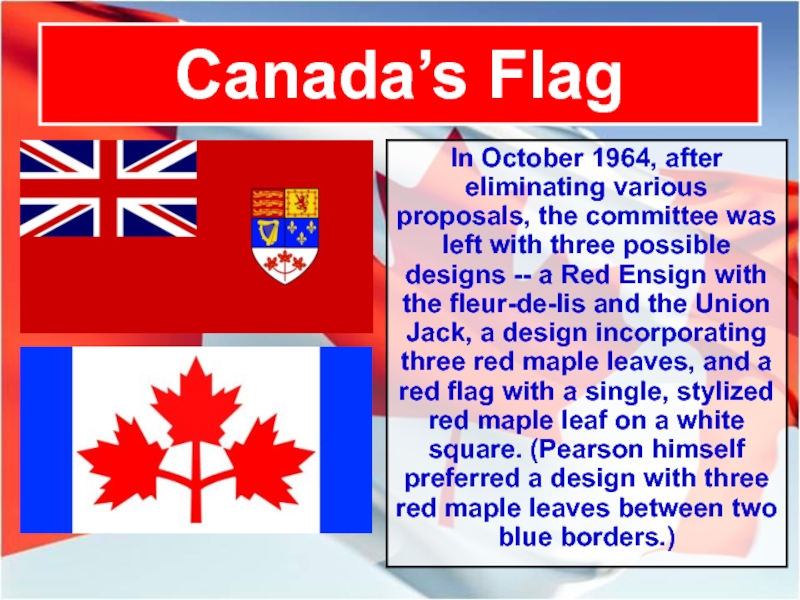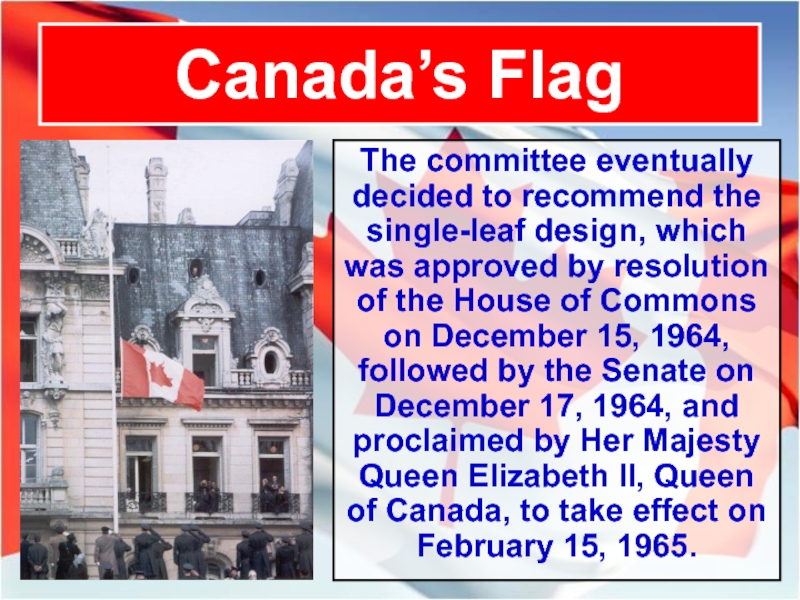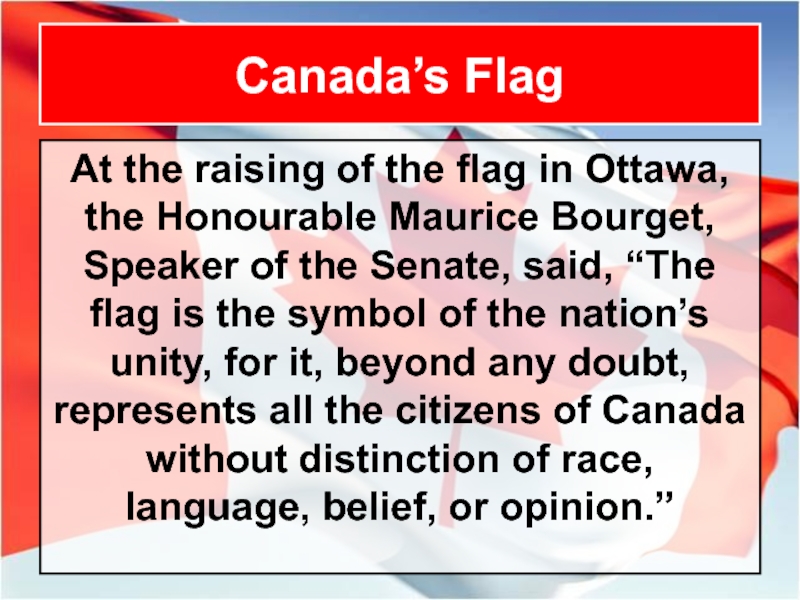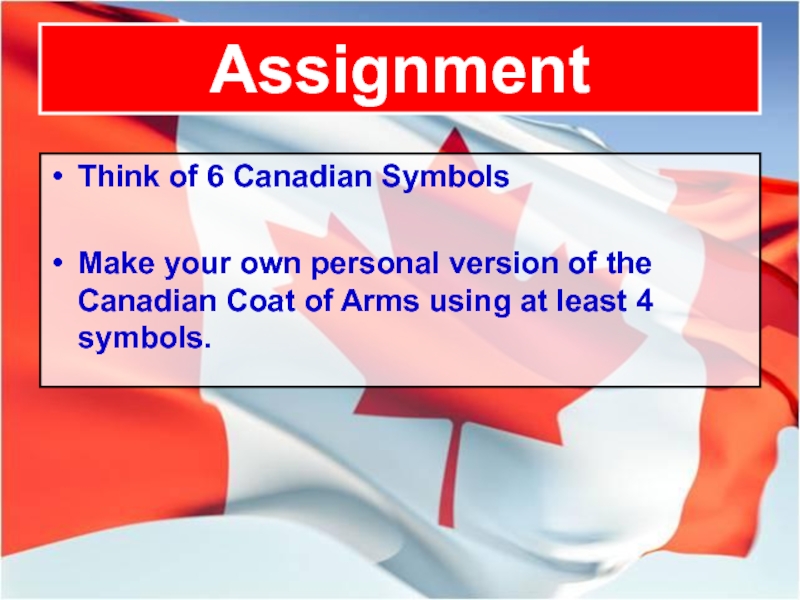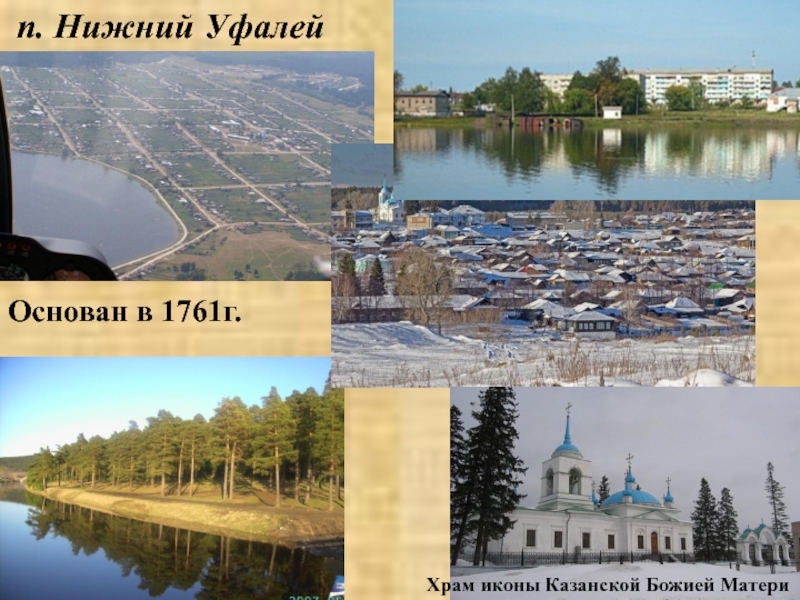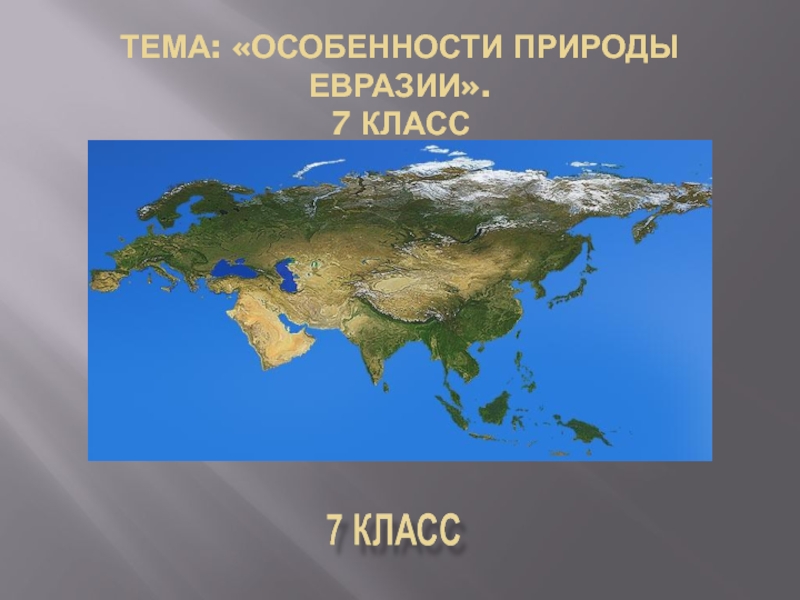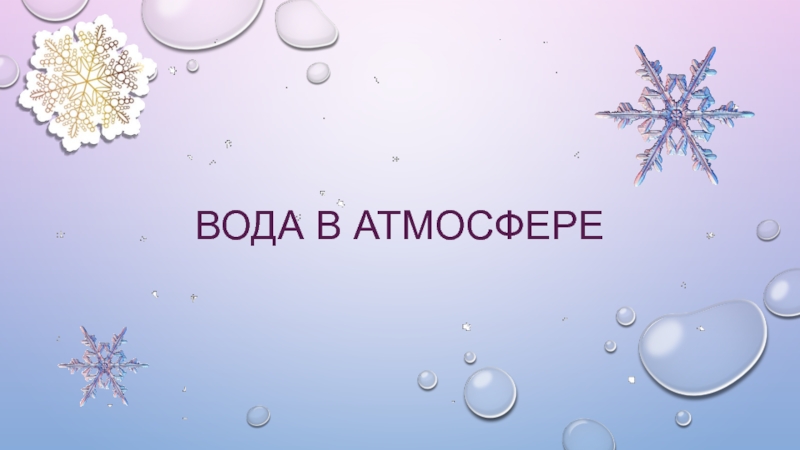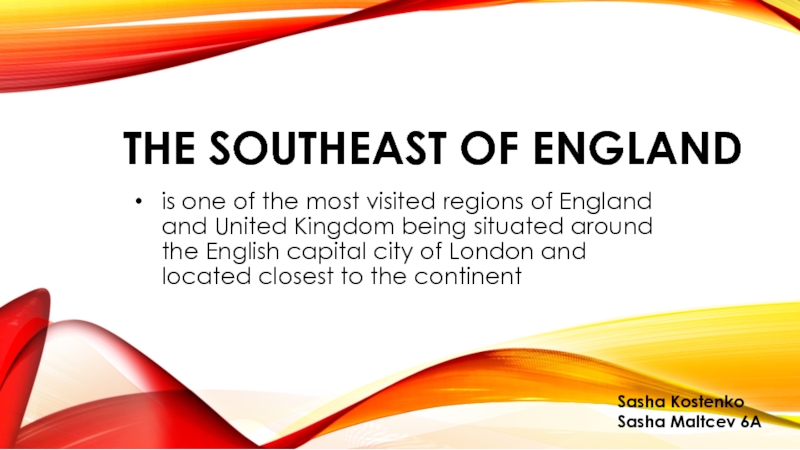- Главная
- Разное
- Дизайн
- Бизнес и предпринимательство
- Аналитика
- Образование
- Развлечения
- Красота и здоровье
- Финансы
- Государство
- Путешествия
- Спорт
- Недвижимость
- Армия
- Графика
- Культурология
- Еда и кулинария
- Лингвистика
- Английский язык
- Астрономия
- Алгебра
- Биология
- География
- Детские презентации
- Информатика
- История
- Литература
- Маркетинг
- Математика
- Медицина
- Менеджмент
- Музыка
- МХК
- Немецкий язык
- ОБЖ
- Обществознание
- Окружающий мир
- Педагогика
- Русский язык
- Технология
- Физика
- Философия
- Химия
- Шаблоны, картинки для презентаций
- Экология
- Экономика
- Юриспруденция
The Maple Leaf symbol of Canada презентация
Содержание
- 1. The Maple Leaf symbol of Canada
- 3. Symbols Symbols originated as a means of
- 4. Symbols Some symbols of Canada are:
- 5. The Maple Leaf
- 6. Great Britain’s Union Jack in 1801 Great
- 7. Well before the coming of the first
- 8. The Maple Leaf Forever In Days
- 9. The Maple Leaf and the Military In
- 10. The Maple Leaf and the Military In
- 11. Red and White: Canada's National Colours
- 12. Canada’s Coat of Arms Red and white
- 13. Pearson informed the House of Commons
- 14. In October 1964, after eliminating various proposals,
- 15. Canada’s Flag The committee eventually decided to
- 16. Canada’s Flag At the raising of the
- 17. Assignment Think of 6 Canadian Symbols
Слайд 3Symbols
Symbols originated as a means of human communication and identification centuries
before printing, photography, and other technologies existed.
In the words of the Department of Canadian Heritage, “emblems and symbols [are] important for preserving traditions and inspiring love of country.”
In the words of the Department of Canadian Heritage, “emblems and symbols [are] important for preserving traditions and inspiring love of country.”
Слайд 4Symbols
Some symbols of Canada are:
The Canadian Coat of Arms;
the maple
leaf;
Canada’s national colours;
the maple tree itself;
and the Canadian flag.
Canada’s national colours;
the maple tree itself;
and the Canadian flag.
Слайд 6Great Britain’s Union Jack in 1801
Great Britain’s Union Jack in 1606
Flag
of England
Canadian Red Ensign was first used in 1870
Flag of France 1743
Слайд 7Well before the coming of the first European settlers, Canada's aboriginal
peoples had discovered the food properties of maple sap, which they gathered every spring. According to many historians, the maple leaf began to serve as a Canadian symbol as early as 1700.
In 1834, Ludger Duvernay is reported to have proposed the maple leaf as an emblem of Canada when the Société Saint-Jean-Baptiste was founded on June 24 of that year.
In 1836, Le Canadien, a newspaper published in Lower Canada, referred to it as a suitable emblem for Canada.
In August 1860, at a public meeting held in Toronto, the maple leaf was adopted as the national emblem of Canada for use in the decorations for the Prince of Wales' visit.
In 1867, Alexander Muir, a Toronto schoolmaster and poet, composed the song The Maple Leaf Forever.
In 1834, Ludger Duvernay is reported to have proposed the maple leaf as an emblem of Canada when the Société Saint-Jean-Baptiste was founded on June 24 of that year.
In 1836, Le Canadien, a newspaper published in Lower Canada, referred to it as a suitable emblem for Canada.
In August 1860, at a public meeting held in Toronto, the maple leaf was adopted as the national emblem of Canada for use in the decorations for the Prince of Wales' visit.
In 1867, Alexander Muir, a Toronto schoolmaster and poet, composed the song The Maple Leaf Forever.
Слайд 8The Maple Leaf Forever
In Days of yore, From Britain's shore Wolfe
the dauntless hero came And planted firm Britannia's flag On Canada's fair domain. Here may it wave, Our boast, our pride And joined in love together, The thistle, shamrock, rose entwined, The Maple Leaf Forever.
[CHORUS] The Maple Leaf Our Emblem Dear, The Maple Leaf Forever. God save our Queen and heaven bless, The Maple Leaf Forever. At Queenston Heights and Lundy's Lane Our brave fathers side by side For freedom's home and loved ones dear, Firmly stood and nobly died. And so their rights which they maintained, We swear to yeild them never. Our watchword ever more shall be The Maple Leaf Forever
[CHORUS] Our fair Dominion now extends From Cape Race to Nootka Sound May peace forever be our lot And plenty a store abound And may those ties of love be ours Which discord cannot sever And flourish green for freedom's home The Maple Leaf Forever [CHORUS]
[CHORUS] The Maple Leaf Our Emblem Dear, The Maple Leaf Forever. God save our Queen and heaven bless, The Maple Leaf Forever. At Queenston Heights and Lundy's Lane Our brave fathers side by side For freedom's home and loved ones dear, Firmly stood and nobly died. And so their rights which they maintained, We swear to yeild them never. Our watchword ever more shall be The Maple Leaf Forever
[CHORUS] Our fair Dominion now extends From Cape Race to Nootka Sound May peace forever be our lot And plenty a store abound And may those ties of love be ours Which discord cannot sever And flourish green for freedom's home The Maple Leaf Forever [CHORUS]
Слайд 9The Maple Leaf and the Military
In 1914, many Canadian soldiers wore
the maple leaf on their military badges, and it was the dominant symbol used by many Canadian regiments serving in the Great War (World War I).
Слайд 10The Maple Leaf and the Military
In 1939, at the beginning of
World War II, numerous Canadian troops once again used the maple leaf as a distinctive emblem, displaying it on regimental badges and Canadian army and naval equipment.
Слайд 11Red and White: Canada's National Colours
History records that in the first
crusade, Bohemund I, a Norman lord, had red crosses cut from his mantles and distributed to the 12,000 crusaders, who then wore them as a distinctive badge on their garments.
In subsequent crusades, each nation was distinguished by a cross of a different colour. France long had a red cross on its banners while England used a white cross. Time and again in history, red and white are found as the colours of France or of England.
In subsequent crusades, each nation was distinguished by a cross of a different colour. France long had a red cross on its banners while England used a white cross. Time and again in history, red and white are found as the colours of France or of England.
Слайд 12Canada’s Coat of Arms
Red and white were approved as Canada's official
colours in the proclamation of the royal arms of Canada in 1921 by King George V.
In 1957, the colour of the maple leaves on the shield of the Royal Arms of Canada was changed from green on a white ground to red on a white ground in recognition of Canada's official colours.
In 1957, the colour of the maple leaves on the shield of the Royal Arms of Canada was changed from green on a white ground to red on a white ground in recognition of Canada's official colours.
Слайд 13
Pearson informed the House of Commons that the government wished to
adopt a distinctive national flag. The 1967 centennial celebration of Confederation was, after all, approaching. As a result, a Senate and House of Commons Committee was formed and submissions were called for once again.
Canada’s Flag
Слайд 14In October 1964, after eliminating various proposals, the committee was left
with three possible designs -- a Red Ensign with the fleur-de-lis and the Union Jack, a design incorporating three red maple leaves, and a red flag with a single, stylized red maple leaf on a white square. (Pearson himself preferred a design with three red maple leaves between two blue borders.)
Canada’s Flag
Слайд 15Canada’s Flag
The committee eventually decided to recommend the single-leaf design, which
was approved by resolution of the House of Commons on December 15, 1964, followed by the Senate on December 17, 1964, and proclaimed by Her Majesty Queen Elizabeth II, Queen of Canada, to take effect on February 15, 1965.
Слайд 16Canada’s Flag
At the raising of the flag in Ottawa, the Honourable
Maurice Bourget, Speaker of the Senate, said, “The flag is the symbol of the nation’s unity, for it, beyond any doubt, represents all the citizens of Canada without distinction of race, language, belief, or opinion.”
Слайд 17Assignment
Think of 6 Canadian Symbols
Make your own personal version of the
Canadian Coat of Arms using at least 4 symbols.
